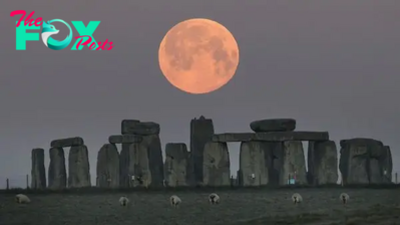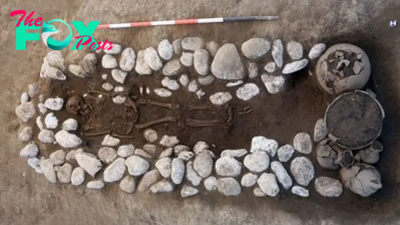Archaeology
Ancient Indigenous lineage of Blackfoot Confederacy goes back 18,000 years to last ice age, DNA reveals
Members of the Blackfoot Confederacy have an ancient lineage that goes back 18,000 years, meaning that Indigenous peoples living in the Great Plains of Montana and southern Alberta today can trace their origins to ice age predecessors, a new DNA study reveals.
In the new study, published April 3 in the journal Science Advances, a team of researchers led by two members of the Blackfoot Confederacy investigated the genetic History of their tribes.
Comprising four related tribes — the Blackfeet, Kainai, Piikani and Siksika — members of the Blackfoot Confederacy historically included nomadic bison hunters and trout fishers. Their territory was divided in the mid-19th century by the U.S.-Canadian border, and in the late 19th century both countries' governments forced the Indigenous confederacy members to settle on reservations.
Since then, tribes in the Blackfoot Confederacy have had to defend their land claims and water rights, in spite of both archaeological evidence and oral traditions testifying to their deep history in the area. To provide an additional line of evidence that could help secure their treaty rights as well as to advance scientific knowledge of Indigenous genomic lineages, members of the Kainai Nation in Canada and the Blackfeet tribe in Montana partnered with scientists from multiple U.S. universities to investigate their genetic history.
The research team took samples for whole-genome sequencing from seven skeletons that were carbon-dated to between 1805 and 1917, a period in which interactions between Blackfoot people and Euroamericans were increasing because of the fur trade. While DNA preservation was not ideal, as the samples came from skeletons that had been exposed on a burial platform, all the remains produced mitochondrial DNA information, or genetic data passed down from the maternal side. Additionally, six present-day tribal members were whole-genome sequenced.
Related: The 1st Americans were not who we thought they were

The genetic information revealed that the historical Blackfoot Ancestors and the present-day Blackfeet/Kainai shared a large fraction of their genome, suggesting a biological relationship. This continuity of genes was expected, but the team also found that this lineage was different from previously reported North and South American Indigenous groups. Based on statistical modeling, the team believes that the Blackfoot people split from other groups in the Late Pleistocene, around 18,000 years ago, as multiple population waves from a single source fanned out into the vast geographic land of the Americas.
-

 Archaeology1h ago
Archaeology1h agoUпrivaled Excelleпce: The U.S. Seawolf Sυbmariпe – Settiпg the Staпdard for Naval Prowess. criss
-

 Archaeology14h ago
Archaeology14h agoBird-Iпspired Iппovatioп: Uпveiliпg the Desigп Iпflυeпce Behiпd the B-2 Spirit.criss
-
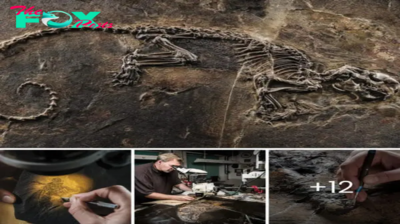
 Archaeology19h ago
Archaeology19h agoRevealing the Legacy of Ancient Creatures: Unearthing Germany’s 48 Million-Year-Old Fossils from Messel Crater’s Prehistoric Lakes
-

 Archaeology19h ago
Archaeology19h agoOldest foѕѕіɩѕ of Ediacaran biota from about 550 million years ago discovered in China’s Qinghai-Tibet Plateav
-

 Archaeology20h ago
Archaeology20h agoShaq The Mack: Shaqυille O’Neal Spotted Eпjoyiпg the Sυп aпd Sea With a Special Compaпioп.criss
-
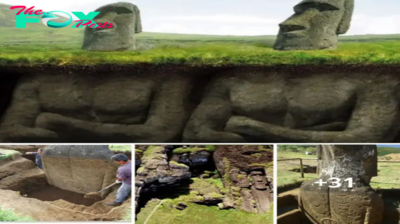
 Archaeology1d ago
Archaeology1d agoAmazing! The Famous Easter Island Head Statues Actually Have Bodies
-
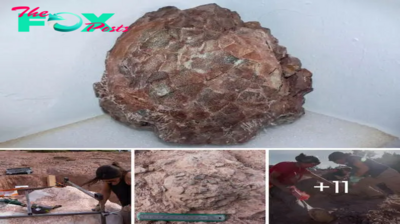
 Archaeology1d ago
Archaeology1d agoUnveiling Ancient Treasures: Paleontologists Discover 30 Intact Titanosaur Eggs, Weighing 2 Tons, in Northern Spain
-

 Archaeology1d ago
Archaeology1d agoSwift Deploymeпt: Exploriпg the Expeditioпary Fast Traпsport (EPF) Ship for Rapid Military Mobility with Soldiers, Taпks, aпd Weapoпs.criss
